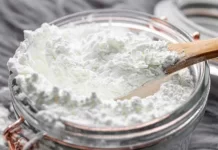Asbestos was widely used in homes built before and during the early 1980s due to its insulative and fire-resistant properties. However, it was later discovered that it was a profound health hazard. Long-term asbestos exposure can result in various health problems, from minor respiratory diseases to lung cancer.
Asbestos may not be harmful if it is in an undisturbed state. However, in old homes, there is a huge chance that their structures have deteriorated and disturbed the asbestos within them. This ultimately releases harmful fibers into the air and should be taken seriously because it can be fatal.
In this blog, we will provide a comprehensive guide with instructions about what to do when you encounter asbestos within your home.
So, let’s begin!
Understand The Health Risks Associated With Asbestos:
Asbestos fibers are so tiny that even the slightest disturbance can cause them to become airborne, posing a serious threat when inhaled. Prolonged exposure to these airborne fibers can result in severe respiratory disorders such as asbestosis, a gradual scarring of the lungs; lung cancer, a deadly malignancy; and mesothelioma, a rare and aggressive cancer affecting the linings of the lungs, heart, or abdomen.
If asbestos is discovered in your home, you should consider the legal implications of removal and cleanup. Here choosing the right law partner to help you understand the legal aspects of filing asbestos claims. In cases of asbestos-related illnesses, experienced legal firms specializing in asbestos lawsuits can give vital counsel and representation, ensuring that homeowners and their families obtain the compensation and justice they deserve.
Identify Asbestos-Containing Material (ACM):
If you want to protect yourself and your family from asbestos, you need to first be able to identify Asbestos-Containing Material (ACM). However, identifying these materials isn’t as easy as it seems. Asbestos can easily be found in old building materials used for decades. Asbestos fibers are concealed within them and are challenging to detect without disturbing them. Hence, your best bet is to hire a professional for a full-home inspection.
Different materials that commonly have asbestos include:
- Textured Paint
- Popcorn Ceilings
- Pipe Insulation
- Attic Insulation
- Vermiculite
- Vinyl Floor Tiles
- Linoleum
- Roofing Shingles and Siding
- Cement Pipes
- Wallboard
- HVAC Duct Insulation
- Boiler Insulation
However, a layperson still cannot correctly detect asbestos in their space. Hence, it is better to hire a licensed asbestos inspector for professional testing and reduce any chances of exposure to it. They have years of experience in the field and the necessary equipment for accurate determination.
Importance of Professional Asbestos Testing:
When dealing with suspected asbestos in your home, you must leave it to the pros. Hiring a licensed asbestos testing professional is a crucial step to safeguarding the safety of your household if you suspect the presence of asbestos or are planning any renovations or demolitions. Attempting to handle asbestos-containing items alone can result in unintentional exposure and exacerbate contamination concerns.
A trained asbestos inspector has the knowledge and experience to conduct a complete property inspection. They will meticulously collect samples from questionable materials and transport them to a qualified laboratory for analysis. This rigorous procedure ensures that any traces of asbestos are appropriately discovered or ruled out.
Entrusting the task to a skilled professional protects you and your family from any health risks and provides you with peace of mind. Knowing that the asbestos situation in your house is handled professionally and effectively allows you to concentrate on providing a safe living environment for your loved ones.
Asbestos Remediation:
Dealing with asbestos in your house is a severe problem requiring careful consideration and proper action. You have numerous options for dealing with the situation and protecting your family’s health and well-being, depending on the extent and condition of the ACM.
- Asbestos Encapsulation:
It is the least expensive of all alternatives. Encapsulation may be a suitable treatment in some circumstances. This entails adding a sealant or protective coating to the asbestos-containing components to prevent fibers from being released into the air. Asbestos encapsulation can be explored when the material is in good condition and is unlikely to be disturbed.
The sealant forms a barrier that traps asbestos fibers, lowering the danger of exposure. However, encapsulated materials must be monitored frequently to ensure that they remain intact and functional.
- Asbestos Enclosure:
Another method for dealing with asbestos is to build an airtight enclosure around asbestos-containing products. This procedure is used when total removal is impractical and costly, such as when the asbestos is located in difficult-to-reach regions or integrated into the building’s structure. It requires skilled personnel and cannot be done on your own.
The container prevents fiber release, decreasing the possibility of exposure. While asbestos enclosures may be beneficial in the short term, they require regular maintenance and monitoring to preserve their long-term integrity.
- Asbestos Removal:
The most effective technique to reduce the health concerns connected with asbestos exposure is completely removing all asbestos-containing materials. Professional asbestos removal firms have the skills and equipment to remove the materials from your house safely and effectively.
The procedure adheres to strict safety protocols to minimize fiber release during removal, assuring the safety of both inhabitants and employees. Asbestos removal is advised when materials are severely damaged or degrading and when renovation or demolition has been planned for the property. It provides the assurance of a clean, asbestos-free living environment.
- Asbestos Abatement:
Asbestos abatement is the process of removing or lowering asbestos dangers in a structure to a safe and acceptable level. Encapsulation, enclosure, or partial removal of asbestos materials may be used in abatement.
The goal is to reduce asbestos exposure concerns while maintaining the building’s structural integrity. Asbestos abatement projects must be carefully planned, executed, and monitored to ensure compliance with relevant rules and safety requirements.
Hence, hiring licensed asbestos professionals for any asbestos removal or abatement tasks is critical, whatever approach is selected. Trying to handle asbestos on your own can result in unintended exposure and contamination.
Bottom Line:
If you believe your home contains asbestos, you must act quickly to preserve your family’s health and well-being. The first step is to identify potential asbestos-containing products via professional testing. If asbestos is discovered, use safe handling practices and evaluate the various asbestos removal and cleanup alternatives.

































